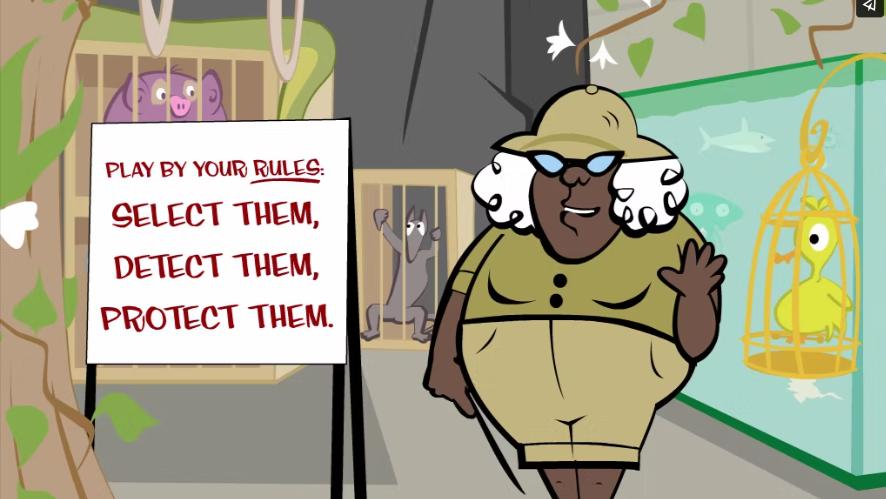It's Your Game

IYG is a a theory-based healthy relationship and sexual health education curriculum.
https://www.etr.org/ebi/programs/its-your-game/
It's Your Game ... Keep it Real! (IYG) is a classroom- and computer-based HIV, STI, and pregnancy prevention, and healthy relationship program. It consists of twenty-four 50-minute lessons delivered during 7th and 8th grade. In each grade, the program integrates group-based classroom activities (e.g., role plays, group discussion, and small group activities) with personalized journaling and individually tailored activities that are computer-based. It was developed using a systematic instructional design process, Intervention Mapping, to ground its content in social cognitive theories.
The program was designed for urban middle school youth in grades 7 and 8, ages 12 to 14 who are predominantly African-American and Hispanic.
IYG covers the following topics:
- Characteristics of healthy friendships
- Skills and self-efficacy to have healthy relationships and refuse sex
- Setting personal limits and practicing refusal skills (related to sexual behavior, alcohol and drug use, cheating, and skipping school)
- Information on puberty, reproduction, and STIs
- The importance of testing for HIV, STI, and pregnancy if sexually active
- Skills and self-efficacy for using condoms and other contraceptives.

Project Details
Trial 1 (2004-2007)
Evaluation Methodology. Randomized controlled trial design; treatment and comparison conditions in 10 schools in Southeast Texas. Students in 7th grade were followed until 9th grade (n=907)
Race/Ethnicity. 44% Hispanic, 42.3% African American, 13.7% all other
Gender. 59% Female, 41% Male
Average Age. 13 years
Behavior Outcomes. After adjusting for covariates: Students in the comparison condition were 1.29 times more likely to initiate sex by the 9th grade than students who received IYG. Students who reported being sexually experienced at the 9th grade follow-up and who were in the comparison condition had a higher frequency of vaginal sex during the last 3 months relative to the intervention condition. Hispanic students in the comparison condition were 64% more likely to initiate sex by the 9th grade than students who received IYG. Female students in the comparison condition had a 1.42 times greater risk of initiating sex by the 9th grade than students who received IYG.
Other Outcomes. At the 9th grade follow-up, students who received IYG also had:
- Increased positive beliefs about abstinence
- Increased intentions to abstain from sex
- Increased knowledge of HIV/STIs
- Increased confidence to refuse sex
- Changed perception of peer norms
Trial 2 (2006-2010)
Evaluation Methodology. Randomized controlled trial design; treatment and comparison conditions in 15 schools in Southeast Texas. Students in 7th grade were followed until 9th grade (n=1,258)
Race/Ethnicity. 48.8% Hispanic, 39.2% African American, 12.3% all other
Gender. 59.8% Female, 40.2% Male
Average Age. 12.6 years
Behavioral Outcomes. After adjusting for covariates: Students who received IYG had 1.5 times greater odds of delaying sexual initiation by the 9th grade than students in the comparison condition. African American students and female students who received IYG had over 2 times greater odds of delaying sexual initiation by the 9th grade than students in the comparison condition. Students who reported being sexually experienced at the 9th grade follow-up and who received IYG had 1.5 times greater odds of using a condom at last sex relative to students in the comparison condition. Students who reported being sexually experienced at the 9th grade follow-up and who received IYG had reduced odds of engaging in frequent sex and in vaginal sex without a condom in the past 3 months relative to students in the comparison condition.
Other Outcomes: At the 9th grade follow-up, students who received IYG also had:
- Increased positive beliefs about abstinence
- Increased intentions to abstain from sex
- More reasons for not having sex
- Greater condom use knowledge, confidence, and intentions
- Greater intentions to get tested for HIV/STI
Trail 3 (2010-2015)
Evaluation Methodology. Group-randomized wait-list controlled trial design; treatment and comparison conditions in 20 schools in Harris County, Texas. Students in 7th grade were followed until 9th grade (n=1,543)
Race/Ethnicity. 63.2% Hispanic, 24.4% African American, 12.3% all other
Gender. 54.7% Female, 45.3% Male
Average Age. 13 years
Behavioral Outcomes. For this effectiveness study, behavioral effects found in the previous 2 studies were not replicated. There were no significant differences in initiation of vaginal or oral sex between the intervention and control groups at follow-up.
Other Outcomes. At 12-month follow-up, students who received IYG reported:
- Increased knowledge of condoms use and HIV/STIs
- More reasons for not having sex
- Changed perceptions of peer norms related to abstinence
- Increased self-efficacy for condom use and negotiation
- Increased self-efficacy about personal limits regarding sex
- Decreased intentions to have sex
- Increased intentions to use birth control
Few of these psychosocial effects were significant at 24-month follow-up.






